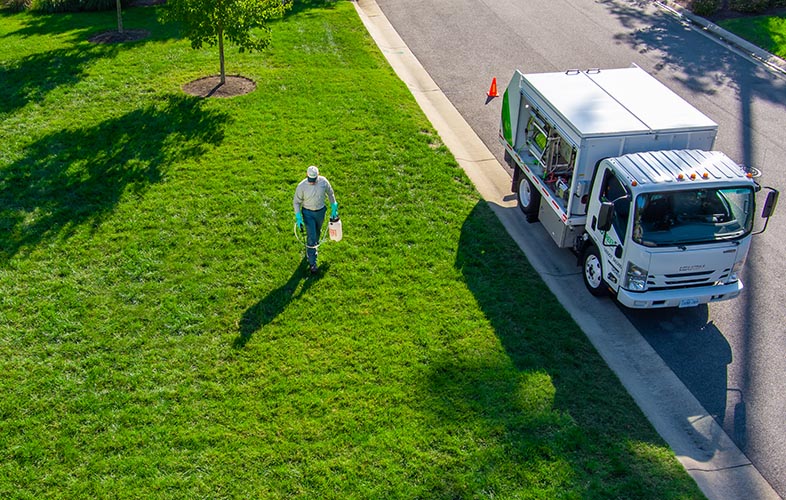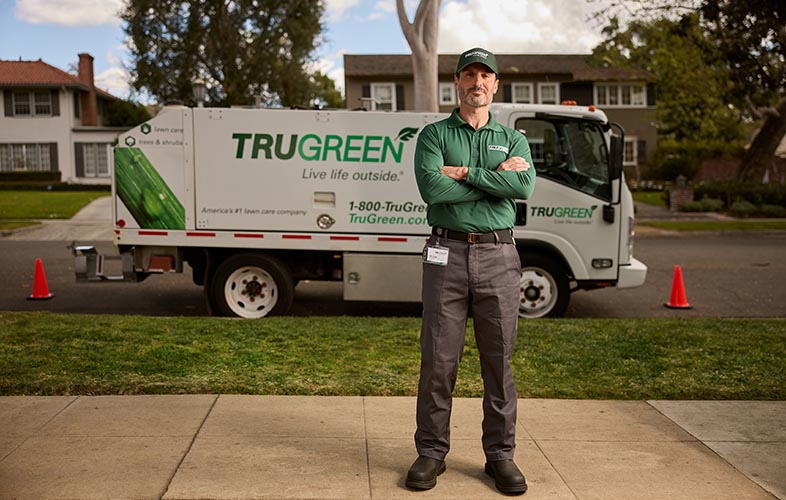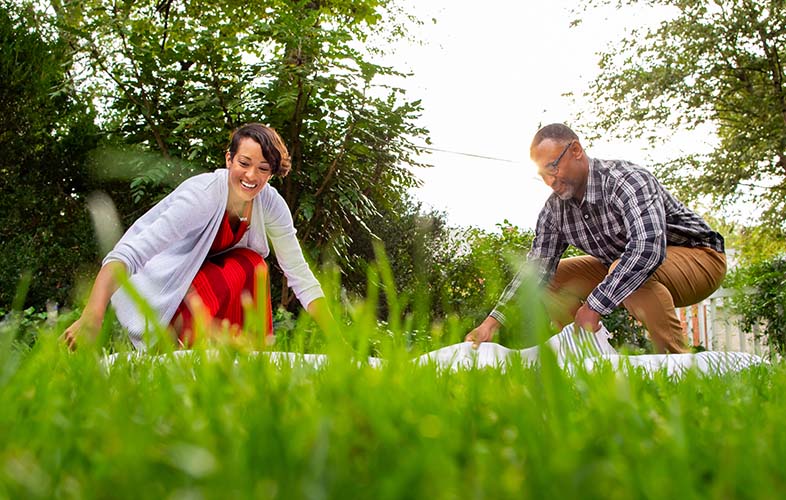One or two grubs living cozily under your grass won’t cause grub damage. A large grub population, however, will. Keep reading to learn a few common signs of grub damage to the lawn.
Sign 1: Wilting (That Doesn’t Resolve With Irrigation)
Grubs are a bit like teenagers: they eat a lot. Except, unlike teenagers, their diet consists primarily of grass roots. With damaged roots, your grass cannot access the water and nutrients it needs to thrive. As a consequence, the first sign of grubs is often the presence of wilting, dehydrated grass. A grub-damaged lawn is also likely to become more sensitive to drought conditions, which can result in further damage.
Sign 2: Patchiness and Discoloration
Irregular patches of dry, discolored grass can indicate grub damage to the lawn. The bad news is that discoloration can signify almost anything from heat stress to lawn disease. The good news is that there’s a fairly easy way to check if the damage is, in fact, grub damage. Grab a spade or a garden hoe, and make 12-inch cuts around the affected area in an angled “U” shape (like you’re drawing three sides of a square). Then, pull up the grass and inspect the upper three inches of soil. If you have grubs, that’s where they’ll be.
Sign 3: Grass Is Lifting Off The Soil
Severe lawn damage from grubs can completely destroy your turf’s root system. When this happens, the grass will easily pull up like lifting carpet or new sod. In many cases, this kills the grass — so ideally, you want to get control of your grub problem before it reaches this stage.



 Branch Finder
Branch Finder













Facebook
X
Youtube
Copy Link
Email